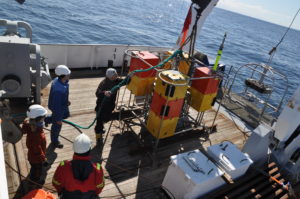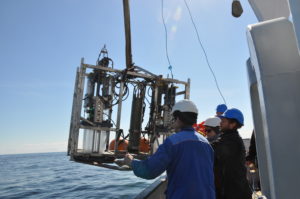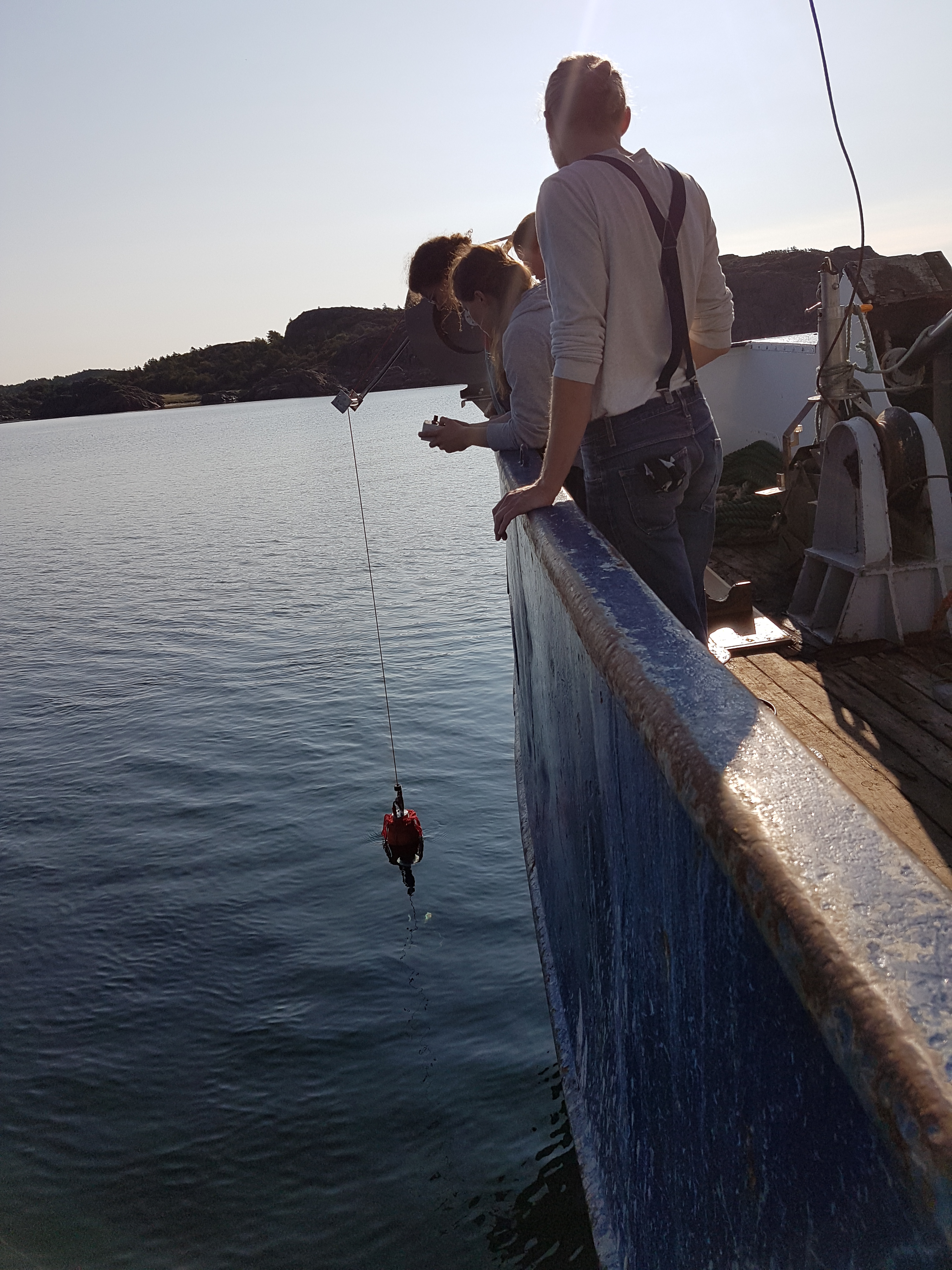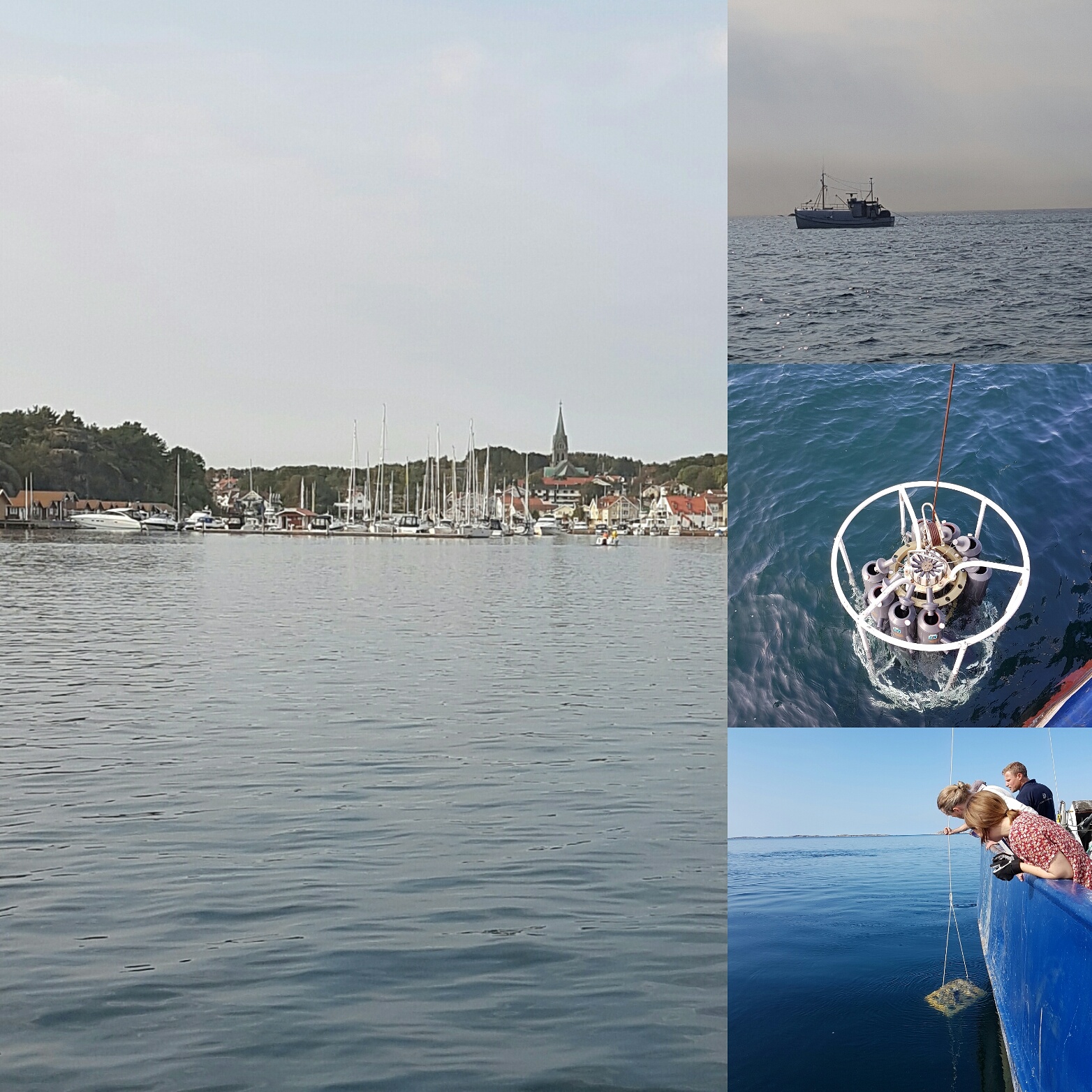And we are back, for the third time, from the Eastern Gotland basin. For little more than one week you will be able to follow the benthic biogeochemistry group at the University of Gothenburg (UGOT) and their work here on the blog. Well, great, but what are we doing?
In brief, the deeper parts of the Baltic Sea suffers from long periods of anoxia (total depletion of oxygen) and hypoxia (low oxygen levels). You can read more about the details in a blog post from last year. The absence of oxygen causes many problems, for example increased eutrophication and negative effects on fish and animals that live on the seafloor. On rare occasions, inflows of water from the North Sea comes in and oxygenates the deep bottoms. It is the effects of one of those inflows that we are investigating.
In 2008-2010, when the deeper bottoms were anoxic, the benthic biogeochemistry group took their lander (more about the lander later) and went to measure what comes out of the sediment and what goes in. Then, in the winter of 2014-2015, there was a huge inflow. Being the largest inflow in 50 years, it oxygenated large parts of the previously anoxic bottoms.
It is well known that many chemical processes are greatly affected by oxygen, so this unique chance to see what happens with the entire system could not be missed. We had to go back. In the first expedition in the summer of 2015, there was quite a lot of oxygen. During the second expedition in the spring of 2016, the oxygen had decreased but was still present. Now we are here for a third time, and it seems like the oxygen is gone. We have followed the cycle from anoxic to oxic and back to anoxic.
So what have we found out so far? Well, results from the first expedition were recently published in an article with the fancy name
Influence of Natural Oxygenation of Baltic Proper Deep Water on Benthic Recycling and Removal of Phosphorus, Nitrogen, Silicon and Carbon – Hall et al. 2017


These results showed that the oxygenation had an impact on two important processes: the flow of phosphorus from the sediment decreased, and nitrification and denitrification were initiated and thereby decreased the amount of nitrogen available for organisms. In short, the sedimentary flow of phosphorus and nitrogen that can be taken up by organisms decreased, which is very good in the Baltic Sea, where there is too much of these substances at the moment.
The results have so far been very interesting, and now it is time to see if the system goes back to the same state as before the inflow, or if something has changed. With us are Per Hall – eccentric biogeochemistry professor from UGOT and expedition leader, Misha (Michail) Kononets – research engineer and lander nerd from UGOT, Nils Ekeroth – researcher at UGOT and all-arounder (i.e. lifesaver), Amanda Nylund – master student from UGOT and filtration expert, Stefano Bonaglia – post doc at Stockholm university who is almost never visible since he is stuck at his microsensors, Sebastiaan van de Velde – PhD student at Vrije Universiteit Brussel and sediment trace metal guy with a nice glovebag, Martine Leermakers – professor at Vrije Universiteit Brussel and filtration expert no 2/water column trace metal person, and Astrid Hylén – blogging PhD student from UGOT and nitrogen detective.
Next up: why digging around in mud is important.
So long,
Astrid



